The weekend after visiting Jenny and Russell, I got out of Melbourne for a trip to the Healesville Sanctuary northwest of the city. I took the train to the closest station and then grabbed a taxi the rest of the way. The taxi driver clued me into the correct bus line to take for my return trip to the station. Much cheaper! It was about three hours one-way and worth the trip.
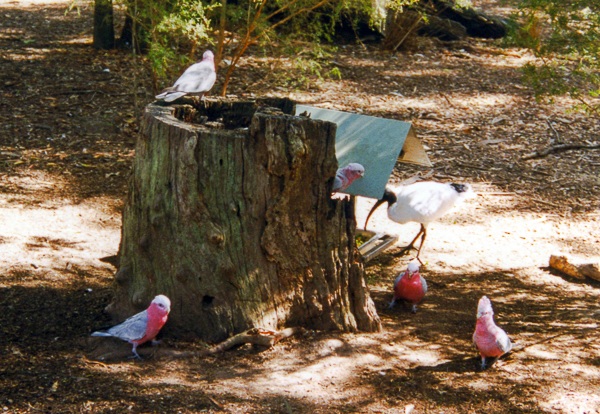
The colorful birds are galahs, also known as rose-breasted cockatoos.
The large white bird is an Australian White Ibis, not to be confused with the Asian Black-headed Ibis. They look similar and at one time were thought to be the same species as the Ethiopian Ibis. At present they are considered distinct.
The ibis have recently begun to abandon their wetland habitats for urban areas where they can easily find scrap food. This has earned them the nickname "bin chickens." (I didn't hear this name used when I was there. Chickens, moreover, were commonly called "chooks.")
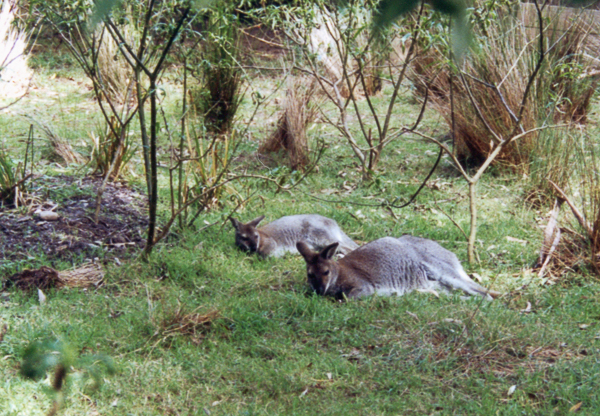
Kangaroos hanging out in the shade. There are several species of kangaroo in Australia. These appear to be female red kangaroos, but I'm not sure. More can be found at the link.
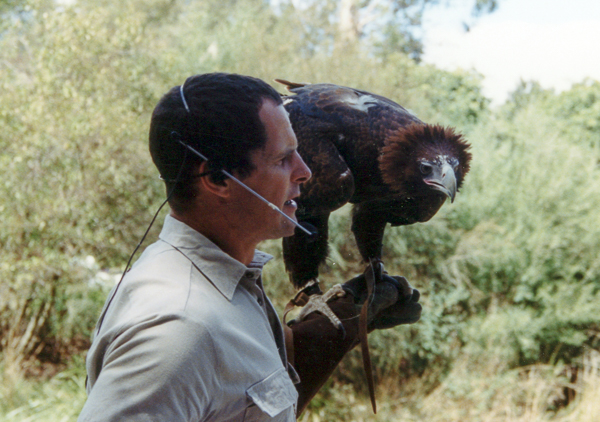
I enjoyed a demonstration by this wedge-tailed eagle and her handler. None of the pictures at the link show it, but the species is distinguished by the ruff, especially in young birds.

The echidna, an egg-laying mammal distantly related to the platypus, is unique to Australia and New Guinea. They eat ants, but are not related to true anteaters and in spite of appearances, they are also not related to hedgehogs. Like hedgehogs, they will curl into spiny balls when threatened.
I don't have any pictures, but I did see some platypuses in a special exhibit. I was astonished at how small they were.
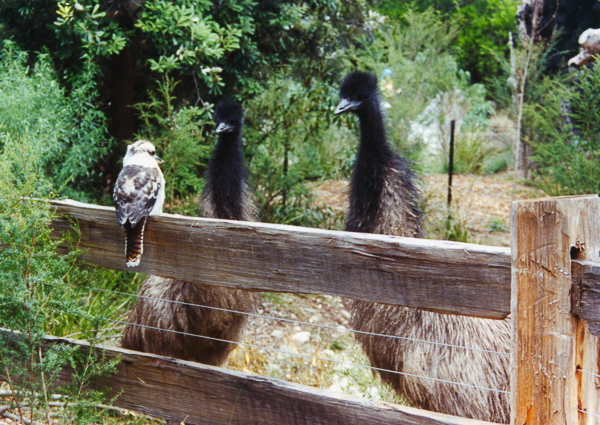
The emus may be juveniles, which are darker than adults. They are confined, but the laughing kookaburra is, well, free as a bird.
Emus were widely hunted and many of the subspecies have gone extinct. In the 1930s an emu war, using military weaponry, killed many because of crop damage. Bounties were offered into the 1960s in an attempt to limit the population. They are now protected.
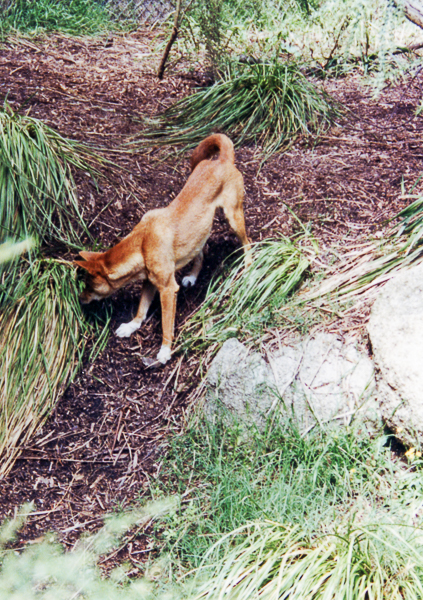
The dingo looks like your ordinary next-door mutt. In fact, some taxonomists consider it the same species as the domestic dog. Others disagree. By the time Europeans arrived, the animal had been domesticated by the indigenous people, so at present it is considered a feral dog rather than one that is truly wild. In either case, it has not been selectively bred by humans.
The populations of genetically "pure" dingos has been threatened by interbreeding with domestic dogs of other breeds. There are currently attempts to isolate them to prevent further admixture.
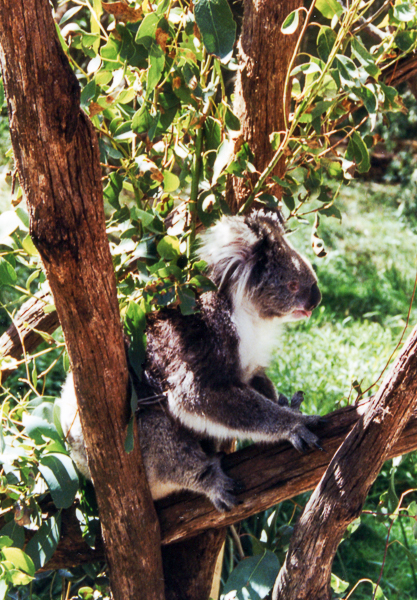
Nobody can visit Australia without getting a picture of a koala.
They are not related to bears, but are marsupials like kangaroos and opossums. They only eat eucalyptus leaves and have developed special digestive systems to break down such low-quality food.
Koala populations are declining due to loss and fragmentation of habitat, cars, and predation by domestic animals.
Click your "back" button to return to the previous page or click for our picture album.